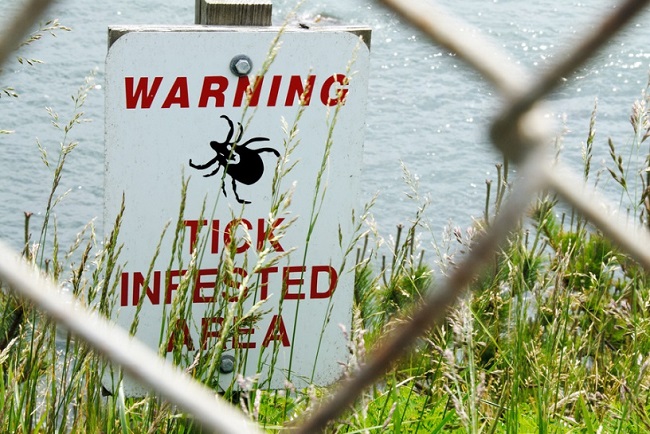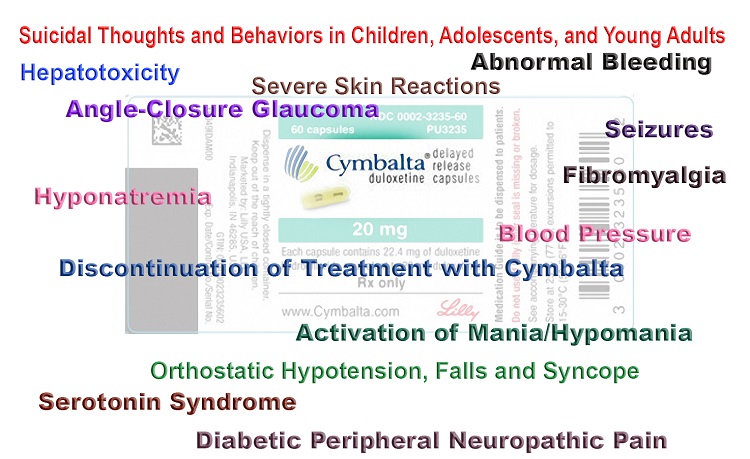A few weeks ago, I was accused of being biased and unscientific for acknowledging that all medications carry risks; that no medication was, in contrast to this commenter’s perception, ‘perfectly safe’. In her view, some medications were perfectly safe, even during pregnancy.
I went on to suggest that while no medication was perfectly safe, certainly some medications were safer than others and some medications were quite necessary for either maternal or fetal health, despite their potential risk for side effects. Sometimes those risks are minimal, and other times, they are not so minimal but necessary nevertheless. Medication use, whether during pregnancy or not, is never without risk. This commenter would have nothing of it. Certain medications were perfectly safe and I was biased and unscientific for suggesting otherwise.
The accusation was in response to the suggestion that meds should not be taken during pregnancy, posted alongside a press report about a recent study delineating the newly recognized side effects to male fetal development when mom takes of paracetamol, (acetaminophen – Tylenol in the US), during pregnancy. Up until recently, the safety of this over-the-counter drug was not contended (aside from the liver damage) and so generations of women took this medication believing it was perfectly safe. It wasn’t until researchers began investigating a broader range of outcome variables than is traditionally considered that these issues with fetal development became apparent. In other words, it wasn’t until we asked the right questions, until we knew what to look for, that we found the right answers.
When one studies maternal health long enough, a common pattern emerges. Drugs once considered perfectly safe are seemingly overnight recognized as not so safe. In reality, this recognition took years, sometimes decades before bubbling to the surface. Across the entirety of pharmacology we see this happen with great frequency, but in maternal health, the presumption of safety has always been spurious at best. More often than not, the research to determine safety is never conducted, and when it is, the studies suffer from serious methodological flaws, including small sample size and overly narrow range of outcome variables.
This happens across maternal health research. For example, a recent, very well-funded and highly touted study of blood pressure medications during pregnancy didn’t even ask whether or which medications to lower blood pressure during pregnancy were safe or safer. It simply asked whether high dose or low dose, aggressive or not so aggressive treatment of high blood pressure during pregnancy was more effective. Since all of the women studied were taking medications, the complications were similar. Since the women in the study were on multiple medications during pregnancy, tying any one complication to a specific medication was impossible. This allowed the researchers to avoid the side-effect/complication discussion altogether and avoid it they did. Beyond simply carrying the pregnancy to term, how did these medications affect overall maternal health, fetal health and infant development? We don’t know, these questions were not asked.
Conventional outcome measures for most maternal/fetal health research include only the most easily observable signs of maternal complications and fetal distress and development, generally within a short time frame of birth. Since those variables often show no apparent connection to the medication (because of design flaws in the research as in the blood pressure study above), the medication is deemed safe. But is it?
This brings us back to the absurd notion that any medication can be perfectly safe. When evaluating research on any topic we have to realize that how we frame the questions and what questions are asked determine what we can know about a given subject. With medical research this is not well understood, except perhaps by those who benefit from an incomplete knowledge set. In women’s health we see this pattern all the time, poorly designed studies fail to ask the right questions or, more often than not, there is no research at all. In both cases, the absence of evidence about a medication’s ill-effects is then transformed into evidence of an absence of any ill-effects e.g. that the medication is perfectly safe. And once the label of perfectly safe becomes entrenched, it is very difficult to disprove.
In the case of the paracetamol research, it wasn’t until the notion of endocrine disruption became more commonplace that researchers expanded their scope of side-effects. Kudos to the researchers for connecting paracetamol to male genital development, but if we’re honest with ourselves, not many of us, even if we are researchers, would have thought to ask that question. We couldn’t have considered questions connecting male or female genital development (notice, they did not concern themselves with female genital aberrations) to acetaminophen until recently, until the notion of endocrine disruption became more firmly established in medical research. When we don’t know what questions to ask (or tacitly ignore certain questions as in the blood pressure research) the answers returned are inadequate.
Returning to my biases about perfectly safe medications: I do have biases. Everyone does. I begin from the standpoint that nothing in life, but especially in medicine, is perfectly safe. This presumption is then colored by the understanding that most research is necessarily flawed, sometimes by economic interests, sometimes by poor design and sometimes just by the limitations of the knowledge base within which the investigators were operating. An absence of evidence is never evidence of absence. The lack of evidence means only that we have yet to ask the right questions. Does that mean medications are never warranted? Certainly not. It just means that I accept that all medications carry risks, many of which we have yet to understand. Those are my biases.
We Need Your Help
More people than ever are reading Hormones Matter, a testament to the need for independent voices in health and medicine. We are not funded and accept limited advertising. Unlike many health sites, we don’t force you to purchase a subscription. We believe health information should be open to all. If you read Hormones Matter, like it, please help support it. Contribute now.
Yes, I would like to support Hormones Matter.
Image credit: PickPik.
This article was published on Hormones Matter originally on July 1, 2015.














Drugs only treat symptoms and should be used exclusively for that purpose. But a symptom is merely a sensory signal that indicates that “something is wrong” in the body. Therefor the drug does not address the cause of the “wrongness” That is why Linus Pauling gave us the idea of “orthomolecular medicine” where nutrients become the “drugs” that address the “wrongness”. Hans Selye concluded that cellular energy deficit, coupled with genetics and the nature of “stress” was the cause of human disease and beriberi, that is the primary energy deficit disease, has become “the great imitator”. I believe that orthomolecular medicine is the medicine of the future if we come to our collective senses.
Your piece Chandler, precipitates some deep, dark horrific history inside my brain. From those microchips put into meds that contact authorities if the meds have or have not been taken, to the mandatory vaccines college students and students of all age must be forced to take. Busted for not taking meds.
( https://www.designnews.com/electronics-test/fda-approves-worlds-first-pill-embedded-sensor/102193146757834 )
First, epigrams of worth, then bugs and bacteria:
++
The wise assumption is that any method which appears to offer advantages to a nation
at war will be vigorously employed by that nation . There is but one logical course to
pursue – namely , to study the possibilities of biological warfare from every angle.
– National Academy of Sciences Committee Report, February 17, 1942
We had a crop destroyer , which we could use in September or October 1945 against
Japan and destroy the food sources . . . nail them down until they sued for peace. A very
logical enterprise . . . we recommended it .
– Assistant Secretary of War for Air Robert Lovett, 1960
The atomic bomb . . . is Jar worse than gas and biological warfare because it affects
the civilian population and murders them wholesale.
– President Harry S.Truman, January 19,1953
++
I am talking about the USA using human guinea pigs in highly “successful” science-backed biological and germ warfare. A great piece out by Wilfred Burchett on Counterpunch, The Bug Offensive:
https://www.counterpunch.org/2018/01/19/the-bug-offensive/
Your readers will see that some of us journalists and educators do not take hook, line and sinker ANYTHING or EVERYTHING coming out of Ivy League schools, whether it’s emanating from the psychology, medical, law, economics and political science departments.
All of this country’s history tied to vaccines, to name one category of medicine in the news nanosecond by nanosecond, starts oddly with Mr. Merck, of Merck Sharpe Dohme. The chemist, George W. Merck, headed up this country’s germ and biological experimentation labs. Imagine, Japanese war criminals who polluted Korea and China with bubonic plague and other germs, getting a green light to come on board here in the good ol’ US of A.
That’s 1941, though, when Merck and the generals and administration of FDR started this sick science experiment. Read what the origins are of Merck, which is one of the biggest vaccine profiteers in the world, getting worldwide distribution of HPV, through its Gardasil. Just the tip of the iceberg.
I know this is teetering on “subjective non-science propositions,” but fortunately, some of us believe we should have much more robust and prosecutorial bio-chem-ag and medical ethics programs and agencies overseeing these highly vaunted men and women like Merck. To think we as a country dropped specialized “bomb” shells in North Korea with fleas and all matter of contaminated insects on civilians might put some context into why North Korea is paranoid of the USA doing the same now, but with nukes. To think about the former Nazis in Alabama and elsewhere working on USA missile systems, and, bam, we have to see the karma factor here — just what is this country’s history and what role does the unethical and despicable inhumanity displayed in almost every sector of society play in a country’s collective guilt and shame?
Merck, and fleas and infected cockroaches. Whew!
quote:
The main method used was to drop a wide range of infected insects, flies, mosquitoes and fleas – the latter with their rat “hosts” – in the bomb-shaped canisters described earlier. These floated down on parachutes, opening as they touched the ground. The various types of insects and animals were carried in separate compartments and were almost invariably found in the region of the canister drops (as a flash-forward, I discovered during a brief visit to Washington in December 1977 that a top-secret and top–priority Pentagon order was issued in late 1951 for the mass production of such canisters. If these were only to serve as “leaflet bombs” as claimed, such secrecy and high priority put a severe strain on a journalist’s credulity!)
….
So much for official United States refusals to hand over Shiro Ishii, Jiro Wakamatsu, Masajo Kitano and others to be tried as war criminals on the grounds that the Japanese had never prepared for, or waged, germ warfare. The evidence presented in the TV documentary justifies the suspicion that United States development of germ warfare was specifically based on a continuance of Japanese methods. In fact, it is on the record that American research started immediately after the US Embassy in Chungking received the confidential report on germ warfare attacks at Changde referred to earlier. This was revealed in what is known in specialized circles as the Merck Report, which dated the start of US research into bacteriological warfare to the end of 1941 (2).
The counter-measures that went into effect in North Korea almost simultaneously with the government’s first announcement of drops of infected insects and the outbreak of plague and other diseases provided impressive evidence that the authorities treated the matter as of life and death importance. Every military unit, every town and village was required to set up insect reconnaissance units and special sanitation squads to deal with them. Reports on insect drops had absolute priority on all civilian and military communication channels. All-out war was declared on rodents, flies, mosquitoes, spiders and other disease carriers. The entire country was mobilised to fight germ warfare. There was no panic, which the Americans in charge of the project might have counted on to spread the insects. For instance, instead of fleeing the area where an outbreak of plague was reported, the house was isolated, the occupants staying on to help their neighbours exterminate the rats and fleas instead of spreading them in all directions by flight.
Not only the people but the most prestigious Korean and Chinese scientists were mobilized. First–class modern laboratories were quickly set up in caves hewn out of the mountains. Among the 16 leading Chinese bacteriologists who played a major part in the fight, four were Research Fellows from Harvard University’s Department of Bacteriology, three were graduates of New York State University, two were from the London National Research Institute and others came from the Rockefeller Institute in Paris. All of them held science degrees from Western universities, and their reputations were international. Two had been decorated by the United States government for their work on the Anti-Typhus Commission in Burma in 1946 (both returned their decorations after the Americans launched germ warfare).
–end quote–
Absolutely fascinating and evil illuminating on some of the origins of this country’s famed medical community.
https://mitpress.mit.edu/sites/default/files/titles/content/9780262730969_sch_0001.pdf
Read George Burchett’s work. An amazing journalist:
Quote:
At the time I was reporting on what I was seeing and hearing of germ warfare there was no background material available; practically nothing in written form existed. When I learned that the flies picked out of the Yalu were infected with anthrax it meant nothing to me beyond the fact that the Americans were indeed dropping insects, that there was the usual high-level lying going on about this, and that Chinese scientists said they were carrying anthrax germs.
I had only vaguely heard of anthrax as an animal disease (in fact it is the oldest recorded disease among animals; Moses, Homer, Hippocrates – they all wrote about it). But it was considered the height of treachery – and I have suffered from it ever since – to suggest that the United States would stoop to such baseness as to deliberately spread anthrax or any other disease. The fact that the Merck Report had been immediately withdrawn because of the horrified reaction from American scientific circles speaks for itself. Without being able to know the full implications, when I saw the swirls of insects floating down the Yalu and clambering aboard the ferry, shaking their wings like ancient warriors flexing their muscles or sharpening their swords, I felt as I had in the hospital ward at Hiroshima. Here was a new terrible threat to mankind. Another weapon of mass destruction even more awesome than the A-bomb – which was the ultimate horror that we knew of at that time – because disease spreads beyond immediate target areas and knows no frontiers.
More:
https://www.youtube.com/watch?v=XfJ3GArFOmg
https://www.youtube.com/user/ExperimentalVaccines
1. George Merck, who wrote the report, was former Chairman of the Biological Warfare Committee of the US Army Chemical Warfare Service. At the time he published his report on the progress in research and development of germ warfare weapons and their potential, Merck was director of the Fort Detrick Bacteriological Warfare Centre in Maryland, USA, which had been set up under terms of strictest secrecy in 1943 following a report by a US War Department special committee that germ warfare was possible. Detailed reference to this is found in Seymour H. Hersh, Chemical and Biological Warfare – America’s Hidden Arsenal, Bobbs Merrill Co., New York, 1968. The Merck Report was published in the March 1946 issue of the Military Surgeon and the October 1946 Bulletin of Atomic Scientists. It was quickly withdrawn on security grounds.
2. Brian Clark, “Biological Warfare”, Science Journal, Vol. 2, No. 11, pp. 74-5.
3. Seymour H. Hersh, Chemical and Biological Warfare – America’s Hidden Arsenal, Bobbs Merrill Co., New York, 1968.
4. Science Journal, op. p. 76.
5. https://pdfs.semanticscholar.org/79e3/0c99cf0ccebb3f1e77c07d4be14fe5072249.pdf
6. https://www.youtube.com/watch?v=K1m3TjokVU4